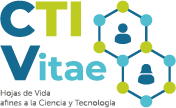ABSTRACT
During the 2020 coronavirus pandemic, the use of technology to continue societal functions, maintain daily living, and gather information became near ubiquitous overnight. In the United States, universities moved to remote online education, non-essential personnel were asked to work from home, many businesses were forced to rapidly embrace online purchasing and even entertainers held concerts on social media platforms. Professional medical personnel, as well as state and local officials, held daily press briefings about the virus on television, radio, and social media. Disaster research has shown that often disasters exacerbate preexisting inequalities during all-hazards and therefore there are several populations likely to be more at risk, such as people with disabilities, and older adults. While complications from the coronavirus were more severe for older adults and those with preexisting health conditions, the preparedness and response efforts to contain the virus lessened the resiliency of other populations during the US outbreaks, potentially hampering their ability to recover at the same rate. For example, several press conferences from officials failed to include or display ASL interpreters. This would put some Americans at a disadvantage since they may have been unable to receive all of the pertinent information on how to keep safe. Furthermore, with nearly 22% of households without broadband internet access (per Pew Research Center), several individuals will not be able to take advantage of the rapid remote learning and work-from-home recommendations. Even when individuals have access to the Internet, older adults have been found to be less knowledgeable about privacy and security tools than younger adults.
Fuente: Assistive Technology
Published online: 23 Nov 2021







